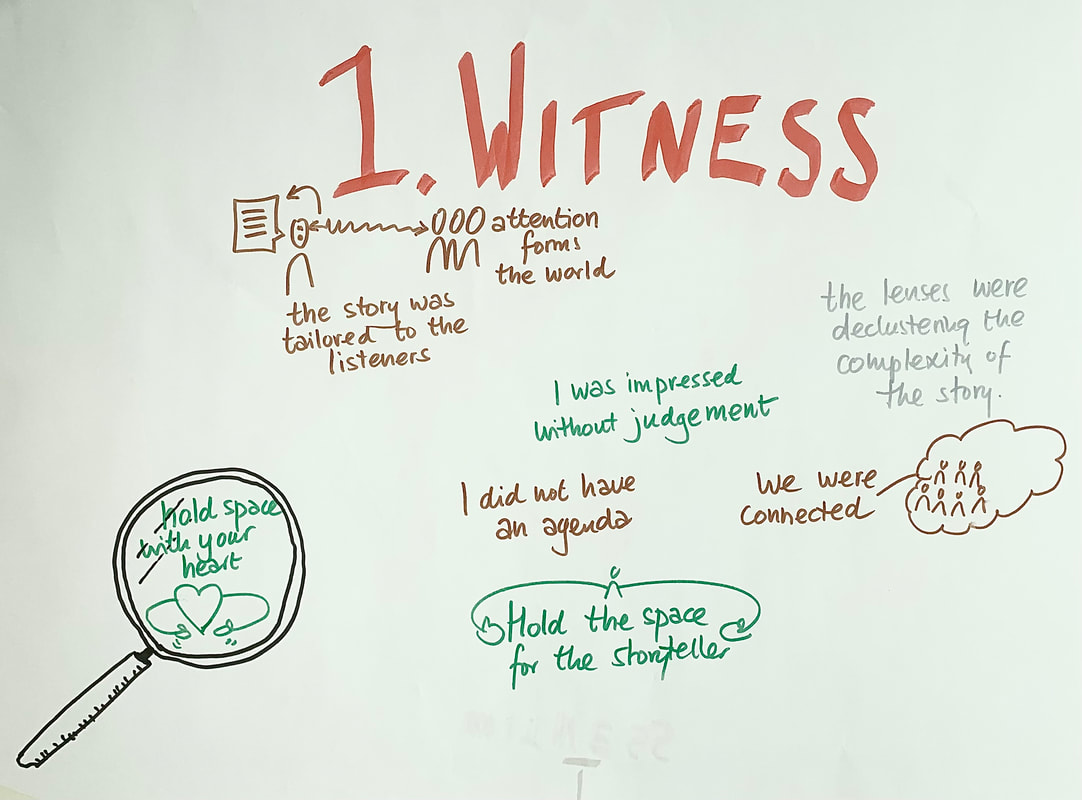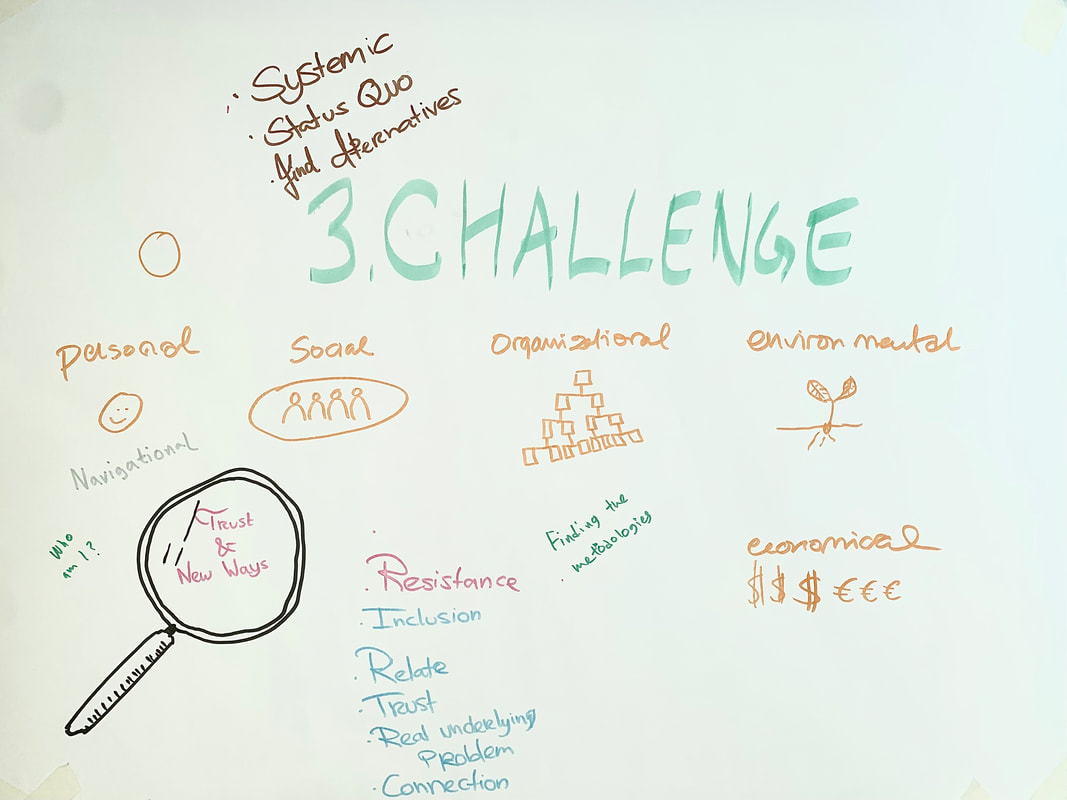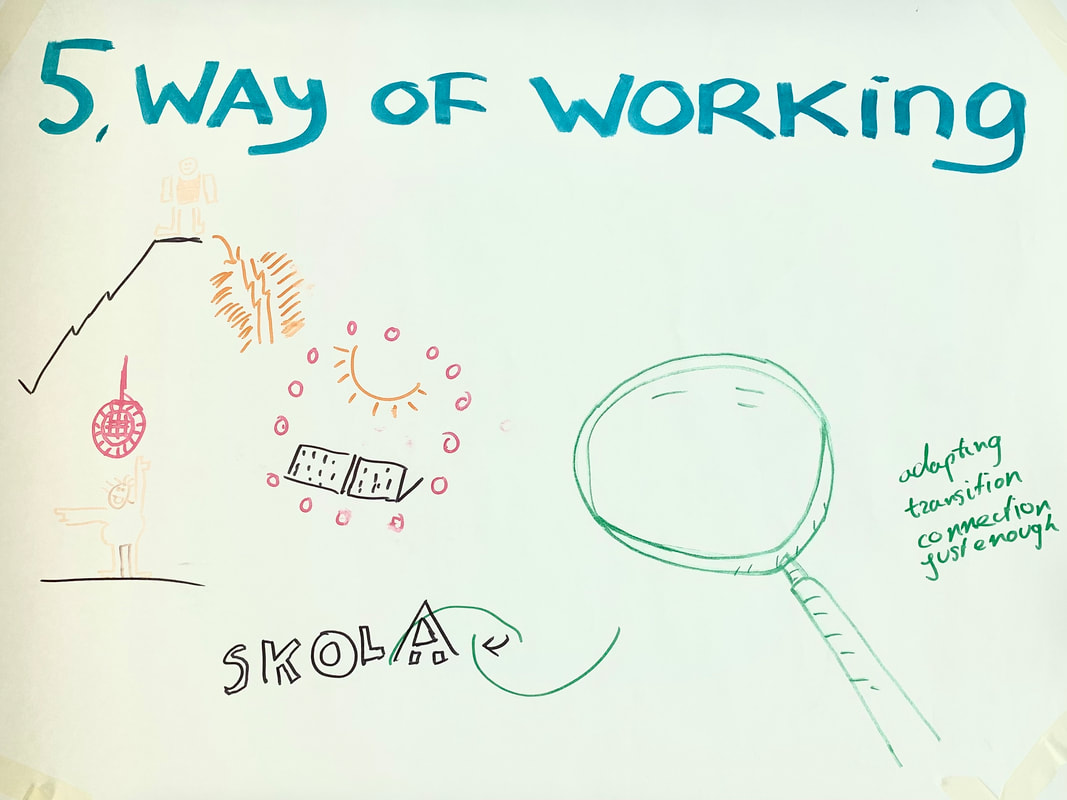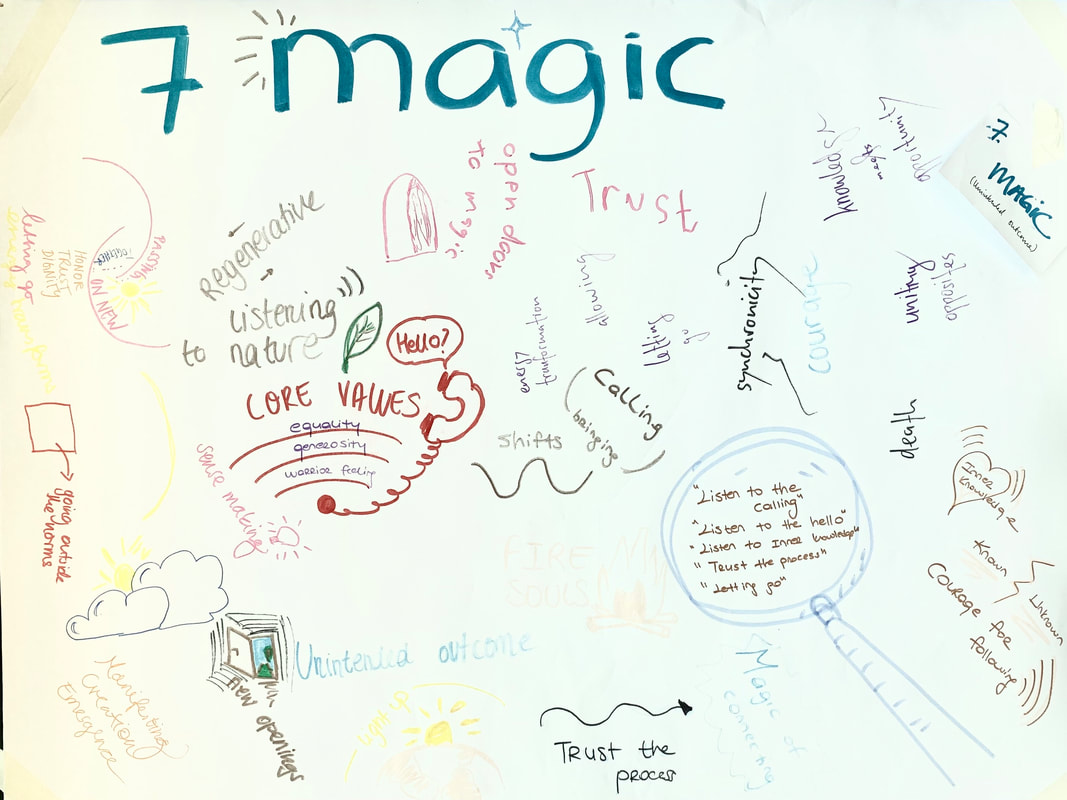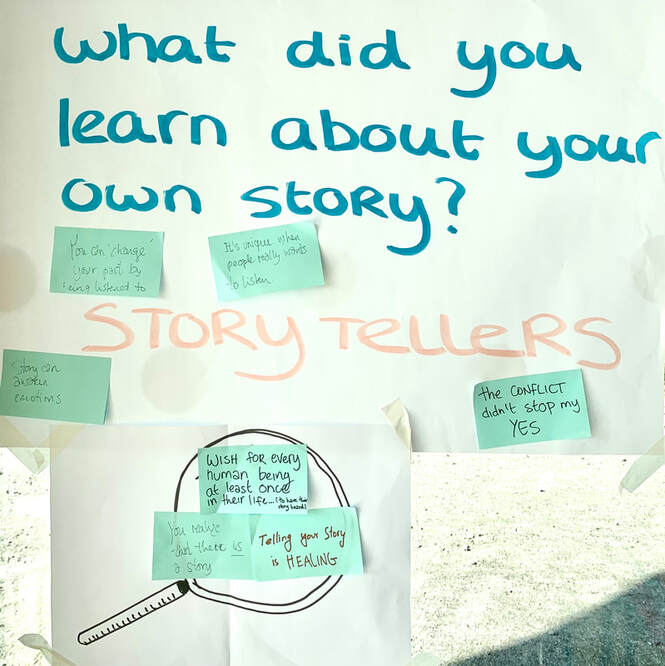Flow of Day 2
Gallery |
Story of Day 2
|
The first 10 minutes of the talk is however about the Homo Colossus concept that I’m going to write a popular science book about this summer. The remainder of the talk is among other things also a practical demonstration of why I started to do stand-up last year (answer: because I can not not have fun and make jokes even when the topic is supposed to be serious).
Before lunch we also had a solo walk and did a World Cafe exercise where the point of departure was the question “How are we playing our part in the thriving of life?” My favorite take-away from the third table was “Live your life. Fertilize.”. Explanation: strive to fertilize the world with your ideas and your actions to the best of your ability - and then complete the cycle of life by fertilizing earth with your (hopefully poison-free) body.
The glorious 90-minute lunch break was followed by Helle’s Two Loops about how the old paradigm over time is overtaken by the new paradigm and by the Collective Story Harvesting and the calling question “How are you working towards the future you want to see”. There were eight designated storytellers and I listened to (and witnessed) Mansi’s story but there were several other stories I wish I could have heard… There were seven “lenses” that people used to listen to concentrate on particular aspects of the story and my favorite was “magic” and the (for some) easier-to-accept paraphrase “unintended outcomes” (coincidence, chance, fortuity, serendipity etc.).
Before lunch we also had a solo walk and did a World Cafe exercise where the point of departure was the question “How are we playing our part in the thriving of life?” My favorite take-away from the third table was “Live your life. Fertilize.”. Explanation: strive to fertilize the world with your ideas and your actions to the best of your ability - and then complete the cycle of life by fertilizing earth with your (hopefully poison-free) body.
The glorious 90-minute lunch break was followed by Helle’s Two Loops about how the old paradigm over time is overtaken by the new paradigm and by the Collective Story Harvesting and the calling question “How are you working towards the future you want to see”. There were eight designated storytellers and I listened to (and witnessed) Mansi’s story but there were several other stories I wish I could have heard… There were seven “lenses” that people used to listen to concentrate on particular aspects of the story and my favorite was “magic” and the (for some) easier-to-accept paraphrase “unintended outcomes” (coincidence, chance, fortuity, serendipity etc.).
Teach: Foundational Patterns
World Café
Rounds 1 + 2: How are we playing our part in the thriving of life?
Round 3: What does that mean for co-creating thriving futures?
Round 3: What does that mean for co-creating thriving futures?
Collective Story Harvest
Question: How are you working towards the future you want to see?


